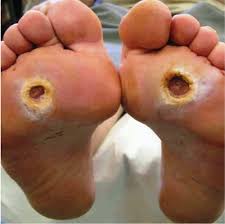Understanding Diabetic Foot Ulcers: Key Insights
Diabetic foot ulcers are a common and serious complication of diabetes. They can lead to severe infections and even amputation if not managed properly. Understanding how to prevent and treat these ulcers is crucial for anyone with diabetes. In this article, we'll explore what diabetic foot ulcers are, how they develop, and the role of proper footwear in prevention and management.
Diabetic foot ulcers are open sores or wounds that occur in approximately 15% of patients with diabetes. These ulcers are most commonly located on the bottom of the foot. They result from a combination of factors, including poor circulation, high blood sugar levels, and nerve damage known as neuropathy.
Causes of Diabetic Foot Ulcers
The development of diabetic foot ulcers is primarily due to two major problems associated with diabetes: neuropathy and peripheral vascular disease. Neuropathy causes a loss of sensation in the feet, making it difficult for individuals to notice injuries or pressure points. Peripheral vascular disease reduces blood flow to the feet, impairing the body’s ability to heal wounds.
Other factors that contribute to the development of foot ulcers include:
-
Foot deformities: Changes in foot shape can lead to pressure points.
-
Poor-fitting shoes: Ill-fitting footwear can cause blisters and sores.
-
Inadequate foot care: Failing to regularly inspect and care for feet can allow small issues to become major problems.
The Importance of Footwear in Prevention
Footwear plays a crucial role in preventing diabetic foot ulcers. Since neuropathy can impair the ability to feel pressure or pain, wearing the right shoes is vital for reducing the risk of sores and ulcers.
Choosing the Right Shoes
When selecting shoes, people with diabetes should look for:
-
Proper fit: Shoes should fit well, neither too tight nor too loose.
-
Comfort: Shoes should provide ample cushioning and support.
-
Breathability: Materials that allow air circulation can help keep feet dry.
-
Depth and width: Extra depth and width can accommodate any foot deformities or orthotics.
Diabetic shoes are specifically designed to reduce the risk of ulcers. These shoes offer extra support and protection, reducing the pressure on vulnerable areas of the foot.
The Role of Orthotics
Orthotics are custom-made shoe inserts that provide additional support and correct abnormal walking patterns. They are particularly beneficial for individuals with foot deformities or who have already developed ulcers. By distributing weight more evenly across the foot, orthotics can significantly reduce the risk of ulcers forming.
Managing Diabetic Foot Ulcers
Once a foot ulcer has developed, it requires careful management to promote healing and prevent infection.
Wound Care
Effective wound care is essential for healing diabetic foot ulcers. This involves:
-
Cleaning the wound: Regular cleaning to prevent infection.
-
Debridement: Removing dead skin and tissue to promote healing.
-
Dressings: Using appropriate dressings to maintain a moist wound environment.
Controlling Blood Sugar Levels
Keeping blood sugar levels in check is vital for wound healing. High glucose levels can impair the immune system, making it harder for the body to fight infection and repair damaged tissue. Patients should work closely with their healthcare provider to manage their diabetes effectively.
Monitoring for Infection
Infections can rapidly worsen foot ulcers, leading to severe complications. Signs of infection include increased pain, redness, swelling, and pus. If any of these signs are present, it is crucial to seek medical attention immediately.
The Impact of Diabetic Foot Ulcers
Diabetic foot ulcers can have a significant impact on a person's quality of life. They can lead to prolonged hospital stays, require extensive medical treatment, and result in a loss of mobility. In severe cases, ulcers can lead to amputation, which has profound physical and emotional consequences.
Preventing Complications
Preventing complications starts with regular foot care. Patients should inspect their feet daily, looking for signs of injury, redness, or swelling. Regular check-ups with a healthcare provider specialising in diabetes care can also help catch potential problems early.
Conclusion
Diabetic foot ulcers are a serious complication of diabetes, but with the right knowledge and tools, they can be prevented and managed effectively. Proper footwear, regular foot care, and effective diabetes management are key to reducing the risk of ulcers. By taking proactive steps, individuals with diabetes can protect their feet and maintain a high quality of life.
Remember, if you have diabetes, regular communication with your healthcare provider is essential. Discuss any concerns about foot health and ask about diabetic shoes or orthotics that can help prevent ulcers.








